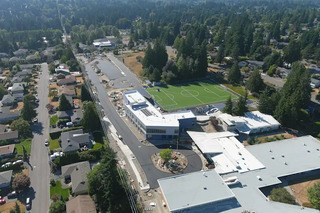Progressive Design-Build

Overview
Lewis has delivered more than $1 billion in progressive design-build work since 2018. Teams from several projects have earned national recognition from the DBIA. Guided by a proven and adaptable framework, we ensure efficient design, reduced risk, and exceptional value for our owners.
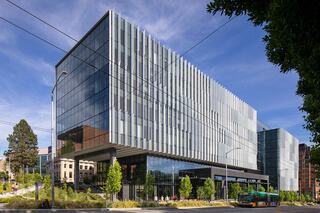
PROJECT INSIGHTS
UW's Hans Rosling Center for Population Health
On UW’s Hans Rosling Center for Population Health, Lewis worked side by side with The Miller Hull Partnership, KPFF Consulting Engineers, and other key partners to foster a culture of trust, collaboration and seamless integration. The project team collaborated in real time, aligning budgets, sharing risk, and solving complex building challenges efficiently in the same "big room." The project received four national DBIA awards including Project of the Year and Best in Architecture.
Read more(Link opens in new window)OUR SECRET SAUCE
As the premier design-builder in the Pacific Northwest, we've immersed ourselves in the values, processes, and behaviors of progressive design-build delivery, approaching projects from a perspective that helps us think differently.
Finding the right partners
By carefully selecting partners and fostering genuine collaboration, we guide projects with rigor and budget-focused foresight. Through aligned teams, clear goals, and integrated design and construction, we deliver maximum value with transparency, trust, and disciplined execution.
We treat partners as true collaborators. We forge partnerships thorough due diligence, evaluating alignment with values, approach, collaboration style, and organizational capacity, and explicitly asking, “What does success look like to you?” Partner selection is never based on convenience or perceived client favoritism; instead, we focus on trust, transparency, and value-based engagement.
Our partnerships are built on mutual respect, early engagement, and honest communication about challenges, risks, and solutions. We're not in the business of design-build to control design. We listen, respect competing priorities, and take design considerations as seriously as construction. With patience and experience, we allow the design process to unfold, providing full transparency on budgets, contracts, and schedules, owning design quality without dictating it, and addressing scope or client goal challenges when necessary.
Going slow to go fast
We begin with a rigorous definition and validation phase. We go slow to go fast, aligning the team on scope, budget, expectations, governance, and deliverables. By investing in areas often exclusive to design—like programming and massing—we provide constructability and logistics feedback that drives integration.
We take the time to understand what is uniquely valuable to our clients. Once client goals are clarified, measured, and interpreted to ensure alignment, and phase deliverables are set at project kickoff. Early engagement with stakeholders and end users informs design decisions, ensuring their needs and preferences are understood.
Promoting design excellence
Design excellence is just as important as budget considerations and execution. We hold ourselves accountable for helping realize the design team’s vision and look for opportunities to elevate the project’s design outcomes. When architects bring bold ideas to the table, our instinct is to find a way to make those ideas achievable without compromising the budget.
Using Target Value Design principles
Our approach is scope-informed by budget to avoid overruns. Starting with fixed budgets and owner expectations, we work backward to identify solutions that maximize project value. We incorporate transparent contingencies to accommodate inevitable changes, moving enhancements into the project as the design takes shape. Deliverables are clearly outlined early in the definition phase, ensuring alignment, efficiency, and client satisfaction.

OSU Dixon Rec Center
Take a virtual tour of Oregon State University's Dixon Recreation Center renovation.
Through a progressive design-build process, Lewis and Opsis Architecture are delivering extensive improvements to the indoor climbing center, east entry, and the racquetball and squash courts, along with many other enhancements.
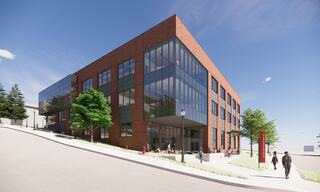
Maximizing Value for WSU
Inside WSU’s future home for engineering and architecture.
The team building Washington State University's Schweitzer Engineering Hall is showing how progressive design-build delivery can maximize value for owners, enhance collaboration, and create a shared sense of ownership across disciplines. The approach has optimized the building and enabled meaningful betterments—all while creating joyful spaces for end users of the 65,000-square-foot academic building.
Read the Story(Link opens in new window)CASE STUDY: INNOVATION HALL
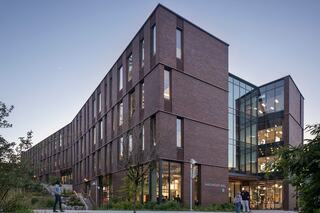
The new Innovation Hall in Bothell, Washington, is the first academic building in the country shared by a university (University of Washington Bothell) and a community college (Cascadia College).
Learn moreMore space for the money
The project team, led by Lewis and Mithun, maximized space for instruction and research while weathering a variety of unforeseen challenges: from a concrete strike to pandemic-related cost hikes.
Mitigating cost escalations
Early engagement with selected trade partners helped with the design, detailing, and to keep the project within our budget. With our collective expertise, we overcame hyper-escalation and materials scarcity without asking for extra funds.
Stretch goal
The project owners prioritized oversizing the building (relative to existing benchmarks) to have the most instructional space possible. As a result, some of the interior buildouts had to be excluded from the base budget and would rely on the availability of contingency funding set aside by the project team.
Delivering value
Through thoughtful risk management, the project team weathered a variety of unforeseen challenges while maintaining a healthy contingency fund. As a result, Innovation Hall is 12 percent larger than comparably-priced academic buildings, allowing the project team to reinvest the funds into instructional space—more labs, more classrooms, and more collaboration and faculty space for both institutions—to serve an additional 72 full-time students each year.

Our work
Recent Progressive Design-Build Projects
View Full Portfolio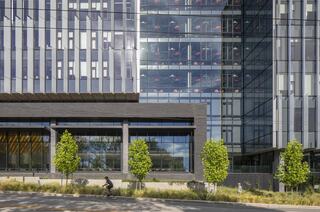
PDB Washington Leader

Since joining Lewis in 2010, Joe Nielsen has played a major role in delivering marquee progressive design-build projects at the University of Washington including the Hans Rosling Center for Population Health and Health Sciences Education Building.
Joe Nielsen
Director of Operations
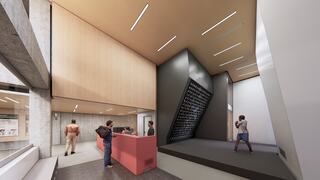
PDB Oregon Leader
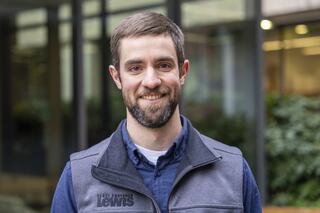
Nick Pritchard, Assoc. DBIA, facilitates Lewis’ design-build process with clients in Oregon including Portland Community college and Oregon State University.

.jpg)
